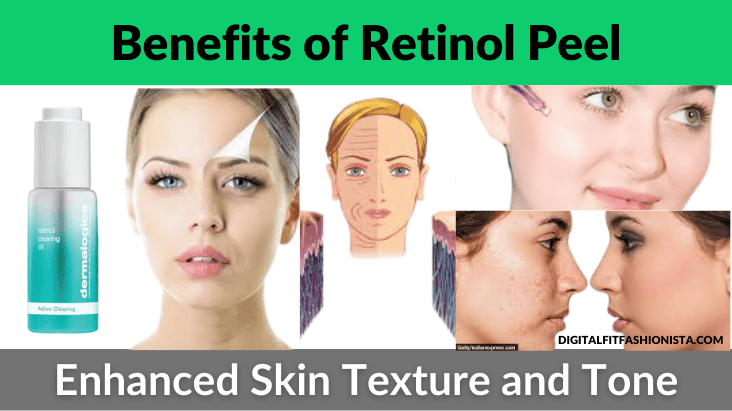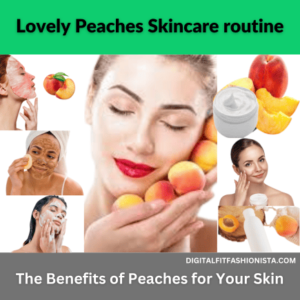Numerous skincare treatments have emerged in the quest for flawless skin, offering various benefits. Among these, Retinol peels have gained immense popularity due to their remarkable ability to rejuvenate and revitalize the skin.
This article delves into retinol peels, exploring their benefits, application, and potential side effects with related FAQs. Join us as we unveil the secrets of this transformative skincare treatment.

Retinol Peel
A Retinol peel is a professional cosmetic procedure that harnesses the power of retinol to address various skin concerns.
Unlike chemical peels that involve harsh chemicals, It is gentler and specifically formulated to deliver controlled exfoliation and stimulate skin renewal.
The Science Behind Retinol
It is a vitamin A derivative and is renowned for its remarkable skin-enhancing properties. When applied topically, it stimulates cell turnover, increases collagen production, and promotes the exfoliation of dead skin cells. These actions work in harmony to reveal a brighter, smoother, and more youthful complexion.
We hope you got the basic idea about this topic. Next move to know its Benefits.
Benefits of Retinol Peel
- Enhanced Skin Texture and Tone
Retinol peels promote cellular turnover, helping to shed dead skin cells and reveal a fresh layer underneath.
This process effectively reduces the appearance of fine lines, wrinkles, and uneven skin texture. Refining the skin’s surface, it offers a smoother and more refined complexion.
- Diminished Hyperpigmentation
Uneven skin tone, age spots, and sun damage are common skin concerns that can be effectively addressed by these peels.
Through their exfoliating properties, it helps to fade dark spots and even out pigmentation, resulting in a more uniform and radiant skin tone.

- Minimized Acne and Breakouts
Retinol peels are highly effective in combating acne and preventing future breakouts. By unclogging pores, reducing inflammation, and regulating sebum production.
It promotes clearer and healthier skin, making them an excellent option for those struggling with acne-prone skin.
- More Collagen Produced
The potential of retinol to increase collagen synthesis is one of its main advantages. The essential protein collagen is in charge of preserving the firmness and flexibility of the skin.
It serves to improve the appearance of fine lines, wrinkles, and sagging skin by increasing the production of collagen, giving skin a more youthful appearance.
- Exfoliates to renew your skin
The remarkable exfoliating abilities of Retinol peels are well known for facilitating the elimination of dead skin cells and fostering the development of new, healthier cells.
It successfully renews the skin, making it look younger, smoother, and more vibrant by promoting cellular turnover. This procedure also aids in reducing the visibility of wrinkles and fine lines, giving skin a more youthful appearance.
So, we learned that a single skincare ingredient can deliver a bucket of skin benefits. To get those benefits we need to know How to use it and what precautions should be taken care of after applying and using the peel.
Application and Follow-Up:
- Application in the Workplace
Dermatologists or licensed estheticians often administer these peels. According to the desired results and the patient’s skin type, a specially designed retinol solution is administered to the skin during the procedure.
The therapy is then left on for a predetermined amount of time. A neutralizer may be used after the treatment to stop the exfoliating process.
- After Peel Care
It’s crucial to stick to a strict skincare regimen after using peel to maximize the advantages and reduce any potential adverse effects.
Utilizing the moisturizers, sunscreens, and mild cleansers suggested by the skincare expert may fall under this category. Furthermore, it’s essential to limit your time in the sun and use SPF on your skin as protection.
In the above, we discussed the Application technique and the post-apply follow-up routine.
Besides having many benefits this peel may have some adverse effects in some cases. If anyone has skin sensitivity or sun hypersensitivity then it may give negative effects. Read through the Adverse reactions and safety advice below.
Potential Adverse Reactions and Safety Advice
Retinol peels are often safe and well-tolerated, but it’s important to be aware of any possible adverse effects and take the appropriate safety measures.
- Skin sensitivity
Peels containing retinol may result in transient redness, dryness, and minor irritation. The professional’s recommended skincare products can be used to treat these adverse effects, which are normally transient.
- Sun Receptivity
The skin’s hypersensitivity to the sun can be increased by retinol. Thus, it is essential to preserve the skin by using sunscreen with a high SPF and avoiding exposure to the sun for an extended period, especially on the days after the peel.
- Advice and a Patch Test
It is essential to have a consultation with a skincare expert before undergoing a retinol peel. To assure compatibility and lower the possibility of negative responses, they will evaluate your skin type, choose the best retinol concentration, and perform a patch test on your skin.
We learned here which type of skin people cannot use the peel.
Previously we covered almost every essential data. Now it’s time to move to the Conclusion part.
Conclusion
From all the information on Retinol Peel, we can easily say that it offers a promising solution for individuals seeking to achieve a revitalized and radiant complexion.
Through their remarkable exfoliating and rejuvenating properties, these peels address various skin concerns, from fine lines and hyperpigmentation to acne and uneven texture.
When performed by a skilled professional and coupled with proper aftercare, it can unlock the path to radiant, youthful-looking skin. Embrace the power of retinol and embark on a journey toward skin transformation. Scroll down to know FAQs.
FAQs
How soon after a chemical peel can I use retinol?
Retinoids should not be used for 10 days after a peel. For seven to ten days, refrain from using scrubs, loofahs, exfoliating sponges, or any other type of mechanical exfoliation on your face.
Why does retinol make your skin peel
The reason why retinoids make your skin peel. Topical retinoids, like Tretinoin, hasten the cycle of skin cell replacement, removing the old layer of skin more quickly than usual. while a result, while your skin purges and peels to adjust to the retinoid, it becomes dry and flaky.
What are the results of retinol yellow peel?
One of the most potent cell-communicating, anti-aging substances to help re-texture skin and significantly lessen wrinkles is retinol yellow peel. It can reverse existing damage and fight against early aging symptoms. It can treat melasma, stretch marks, acne, hyperpigmentation, and photoaging.
- What skincare routine is best for Combination skin - July 18, 2024
- Best Indoor Plants 2024 - June 29, 2024
- Travel Essentials for Women 2024 - June 6, 2024


